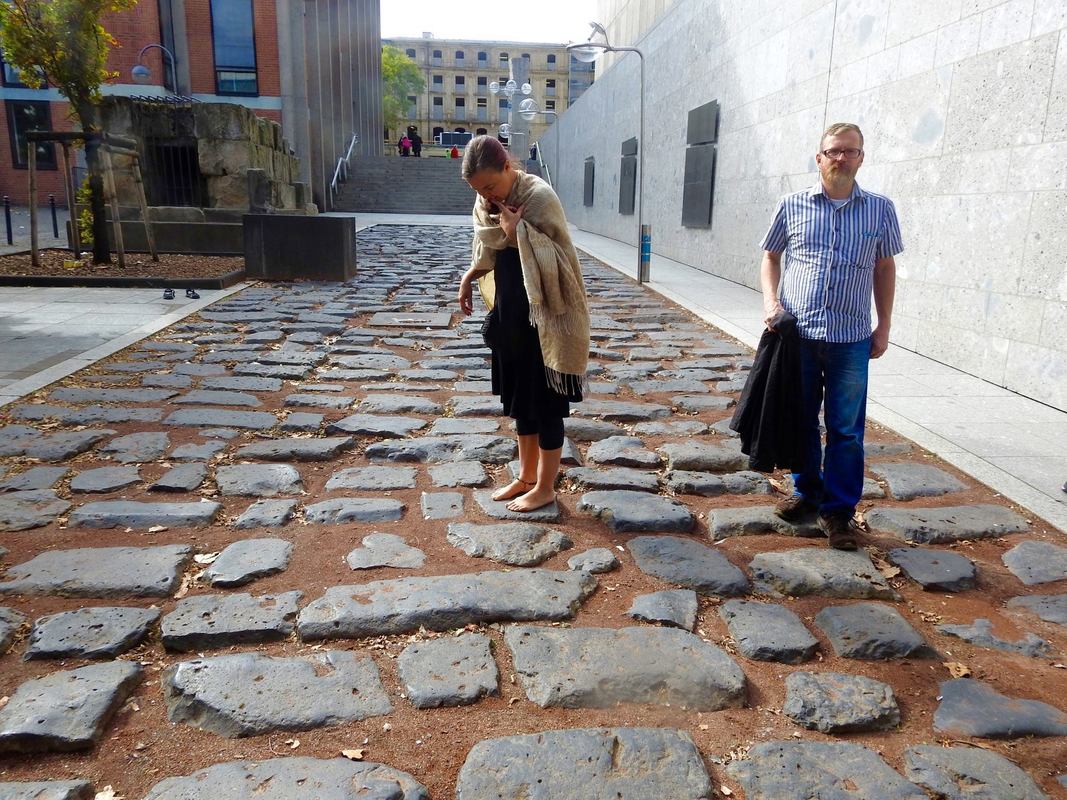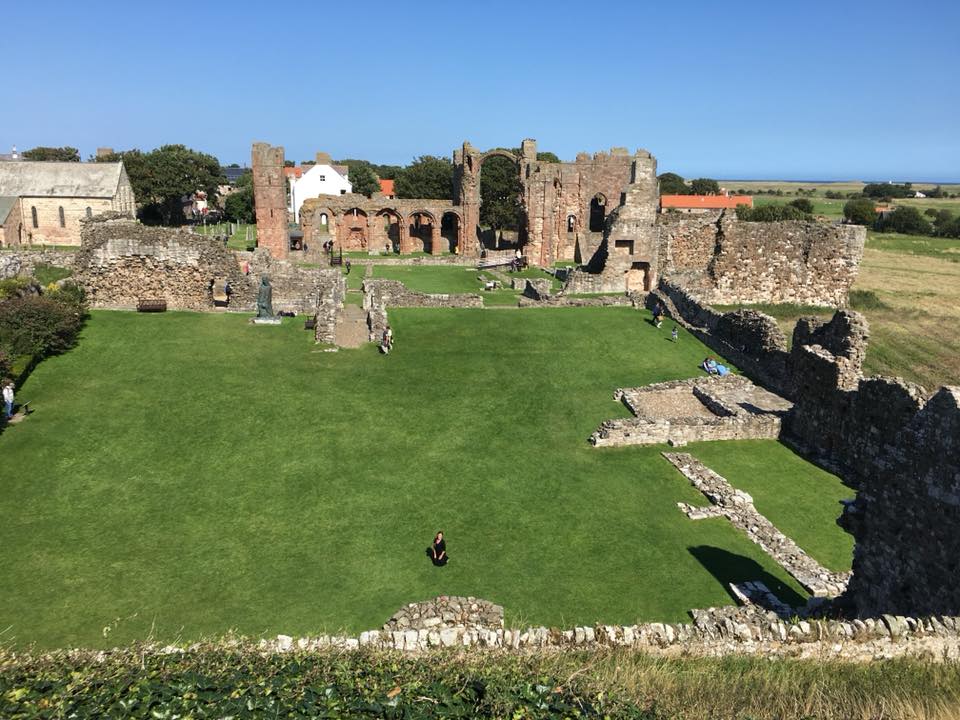- Home
- Explore
- Kids
-
St. Marks ABQ
- Beatitudes
- Catechesis
- Ministry Training
- Devotions
- Advent O Antiphons
- Advent Prayers
- Advent Stories
- Winter Saints
- Advent Creation Waits
- 40 Bible Stories
- Acts
- Summer Stories
- Parent Group
- SMMS Chapel News
- Chapel Time
- Song of the Month
- Contemplation and Chant
- Icon Visits
- Holy Week >
- Liturgy Class
- Reflections
- Blog
- draft
|
Pausing to pray in the midst of the monastery ruins on Lindisfarne (Holy Island), UK. The present day parish church can be seen just beyond the ruins, in upper left hand corner of the photo. Then Jesus asked them, ‘You see all these, do you not? Truly I tell you, not one stone will be left here upon another; all will be thrown down.’ (Matthew 24:2) We hear some variation of this statement from Jesus in all three synoptic gospels (Matthew, Mark and Luke.) Honestly. It's no wonder they killed him. Whenever we humans are working hard to build or maintain some monumental program or project or structure or institution or business or church or other modern day "temple", this is definitely NOT a message we want to hear. But, like it or not, what Jesus says is true. And, I believe, nestled in the (often hard) truth of Jesus' words there is always Good News. Jesus asked them, ‘You see all these, do you not? Truly I tell you, not one stone will be left here upon another; all will be thrown down.’ So where is the Good News in this future Jesus promises? My visit to Holy Island/Lindisfarne (a small island off the Northeast Coast of England) this past summer got me thinking about foundations. Just beyond the present day parish church on Lindisfarne are the ruins of the 12th century priory. The medieval priory was built on the site of a 7th century Anglo-Saxon monastery, which in turn was quite possibly established on the site of some pre-Christian worship or devotion. Here's the history of Holy Island in a nutshell: In 635 St. Aidan founded the first Christian monastery on Holy Island. A century and half later, in 793, Viking raids forced the monks on Holy Island to abandon the monastery and flee to the mainland. Some 400 years later, in the 12th century, monks from the mainland re-established a religious community on Lindisfarne and built a magnificent new church on the site of the former monastery church. A small monastic community continued on the site for another 400 years or so, until 1537, when, to mark the severing of ties between the Church of England and the Church of Rome, King Henry VIII ordered the dissolution of all English monasteries. Today a Christian community gathers to worship on Holy Island in a church building just steps from the old monastery ruins. But in due time that building-- and the institutions that support it --will undoubtedly crumble and fall, as well. The inevitable crumbling of the church as we know it--along with every other structure and monument we spend our lives laboring to erect and maintain--seems somehow less disastrous when seen from amidst the ruins on Holy Island. Sure, my present pet project might be destroyed or abandoned, but in 400 (or 4 or 4,000) years another generation might well come and build something beautiful for God on the foundation of what I so painstakingly sought to erect. Everything we build, we build on foundations left by those who came before us. And everything we build--even when it falls--can become part of the foundation on which those who come after us may build. When we come to trust that the only true foundation on which we build is none other than Jesus Christ, then we can persevere in working with due care and diligence, but without undue pride or anxiety. We can do our small part to build something that is beautiful, solid, and useful for a time, in the full and certain knowledge that our most useful, solid, beautiful constructions are also always temporary. All will be thrown down. Which is, it turns out, actually fine. It is, in fact, as it should be. In a few days the Church will enter the season of Advent. A season of darkness. Of waiting. Of anticipation. As we mark the beginning of the Circle of the Church Year, can we not only accept, but even rejoice in the dismantling of our old structures, old accomplishments, old monuments, old dreams? I tell you, not one stone will be left here upon another; all will be thrown down. Can we watch, unflinchingly, as our old temples fall? So that can we rejoice in doing our next small part, with God, in creating something new?  Walking barefoot in Cologne, Germany on the excavated remains of a Roman road built c. 50 AD,
1 Comment
|
AuthorMy name is Sylvia Miller-Mutia, and I am a priest in the Episcopal Church. I have recently accepted an exciting call to serve as assisting clergy at St. Mark's Episcopal Church in Albuquerque, NM with a focus on outreach, evangelism, and family ministry. I continue serving as "priest at large" for the larger church and wider world, assisting the people of God in whatever ways I can, and developing new resources for spiritual formation to share. Prior to my current call, I served as Rector (aka Pastor) of St. Thomas of Canterbury Episcopal Church in Albuquerque, NM (2015-2018), Assistant Rector at St. Gregory of Nyssa Episcopal Church in San Francisco, CA (2010-2015) and Pastoral Associate for Youth & Families at St. Stephen's Episcopal Church, Belvedere, CA (2002-2009). I am married to Donnel (grief counselor, couples coach, artist, best dad ever), and we have three awesome kids, ranging in age from 8-14. Archives
June 2023
Categories |

 RSS Feed
RSS Feed